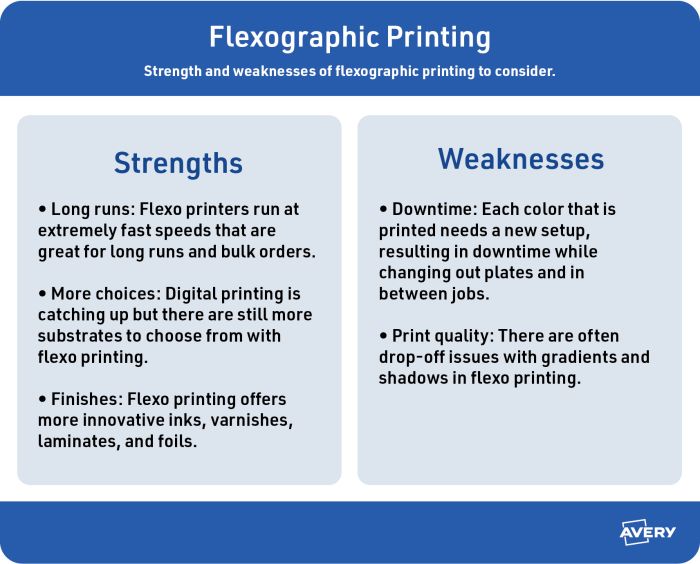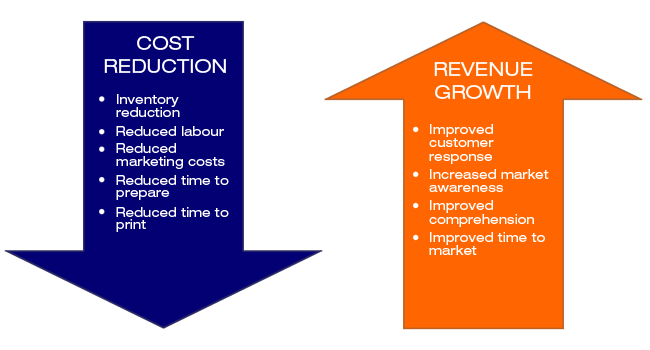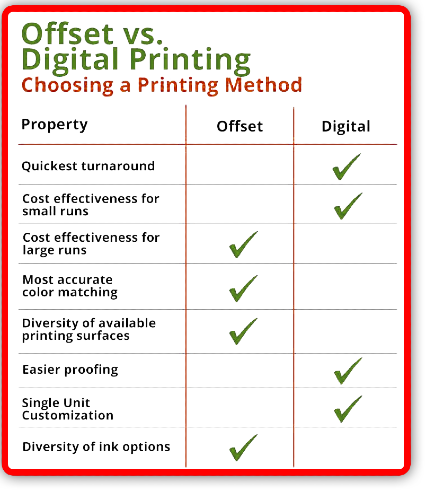Digital Printing Can Be Fun For Everyone
Digital Printing Can Be Fun For Everyone
Blog Article
Not known Details About Digital Printing
Table of ContentsThe Ultimate Guide To Digital PrintingDigital Printing Can Be Fun For AnyoneDigital Printing - The FactsGetting The Digital Printing To WorkThe smart Trick of Digital Printing That Nobody is DiscussingThe Main Principles Of Digital Printing
Variable information printing, such as direct mail with customized codes and addresses, is preferably suited for electronic printing. Digital fast printing only requires four actions of layout, review, printing and binding to obtain whatever done. Digital quick printing has an unequaled advantage: print on demand.According to PMMI, digital printing allows brands and suppliers to react rapidly to customer needs while boosting the supply chain, lowering warehousing cost and waste, and taking pleasure in faster time to market. That all audios great, yet just how does this modern technology do all that? The significant differentiator of these modern technologies is that there are no set-up fees and no plates with electronic printing.
Some Known Factual Statements About Digital Printing
According to Wikipedia, the best distinction in between digital printing and typical techniques such as lithography, flexography, gravure, or letterpress - Digital Printing is that there is no demand to replace printing plates in digital printing, whereas in these analog printing methods the plates are repeatedly changed. This leads to quicker turn-around time and decreases cost when using electronic printing.
Digital printing is very versatile, so it's easy to make modifications to the package layout swiftly. It all goes back to the plates.
With traditional printing methods, short-run printing is simply not possible. Due to the fact that a fantastic style can make or damage your item, digital printing constantly develops top quality, clear and vivid graphics each time.
Digital printing is the process of printing digital-based pictures directly onto a selection of media substratums. There is no demand for a printing plate, unlike with offset printing. Digital documents such as PDFs or desktop computer publishing data can be sent straight to the electronic printing press to print on paper, image paper, canvas, textile, synthetics, cardstock and various other substratums.
Not known Incorrect Statements About Digital Printing
According to PMMI, digital printing allows brands and makers to respond rapidly to client needs while enhancing the supply chain, reducing warehousing price and waste, and delighting in faster time to market. That all sounds great, but just how does this modern technology do all that? The significant differentiator of these innovations is that there are no set-up costs and no plates with digital printing.
According to Wikipedia, the best difference between electronic printing and conventional techniques such as lithography, flexography, gravure, or letterpress is that there is no demand to change printing plates in electronic printing, whereas in these analog printing techniques home plates are consistently changed. This leads to quicker turn-around time and lowers expense when making use of electronic printing.

Indicators on Digital Printing You Need To Know
A lot more supply can suggest more waste later on. With standard printing techniques, short-run printing is simply not feasible. her explanation Because a wonderful layout can make or damage your item, digital printing continually creates high-grade, clear and vibrant graphics each time. Digital printing on versatile pouches includes the brilliant, vivid, and precise graphics that virtually bid consumers to connect and touch them.

According to PMMI, digital printing permits brands and producers to respond swiftly to consumer demands while boosting the supply chain, minimizing warehousing cost and waste, and delighting in faster time to market. That all audios fantastic, yet how does this technology do all that? The significant differentiator of these modern technologies is find that there are no set-up charges and no plates with digital printing.
The Ultimate Guide To Digital Printing
According to Wikipedia, the best distinction in between electronic printing and typical approaches such as lithography, flexography, gravure, or letterpress is that there is no demand to change printing plates in digital printing, whereas in these analog printing approaches home plates are repeatedly changed. This causes quicker turn-around time and reduces expense when using digital printing.
Digital printing is extremely adaptable, so it's easy to make adjustments to the package design quickly. It all goes back to the plates.

The Ultimate Guide To Digital Printing
Digital printing is the process of printing digital-based photos straight onto a variety of media substratums. There is no demand for a printing plate, unlike with countered printing. Digital documents such as PDFs or desktop computer posting files can be sent directly to the digital printing machine to publish theoretically, image paper, canvas, material, synthetics, cardstock and various other substratums.
Report this page